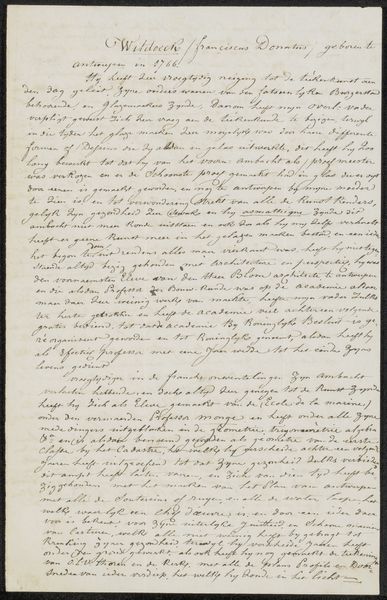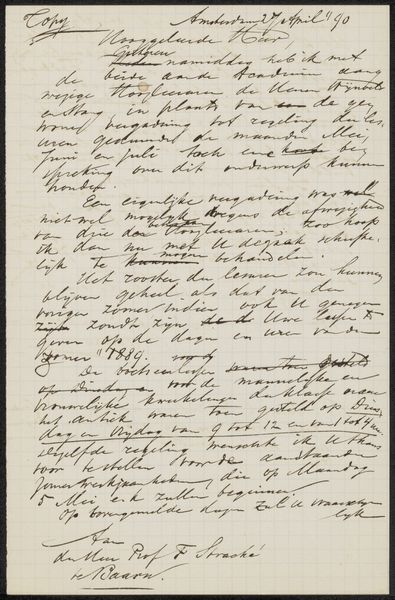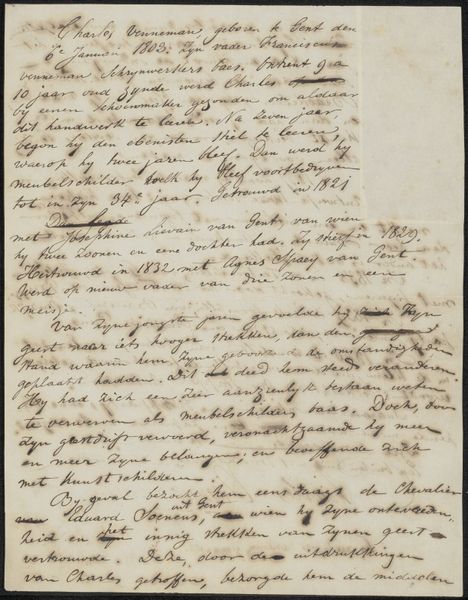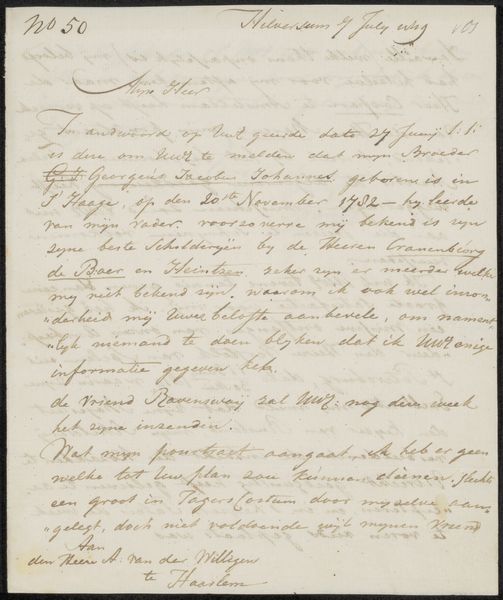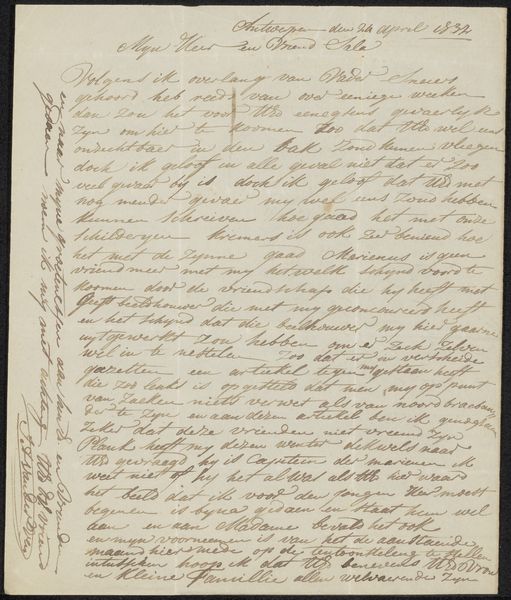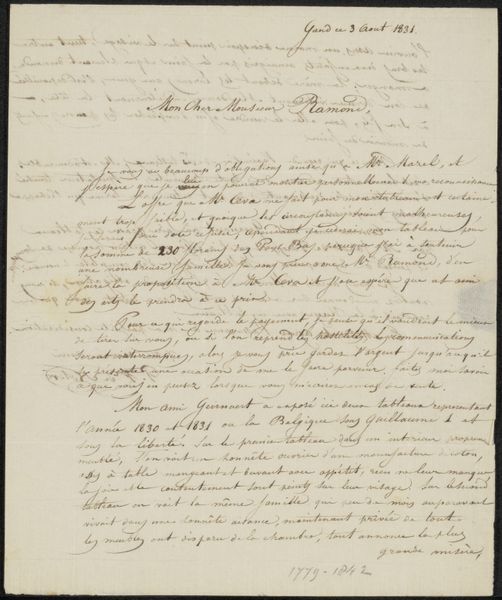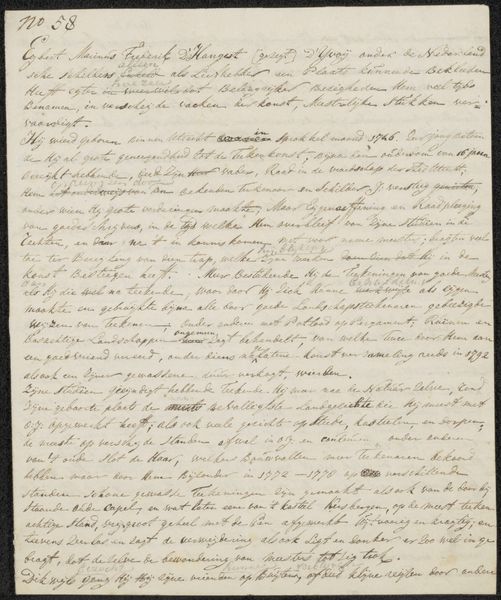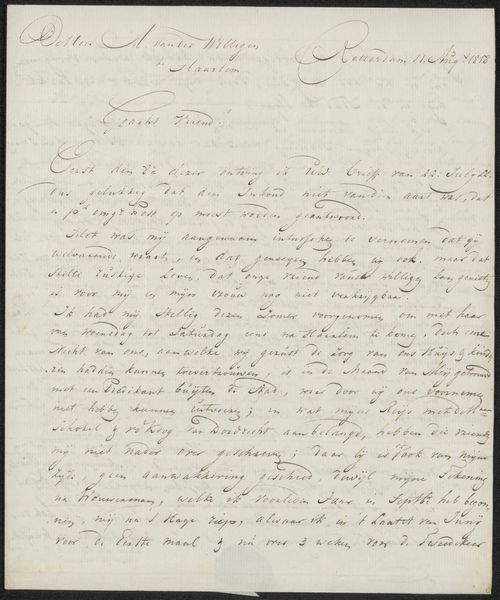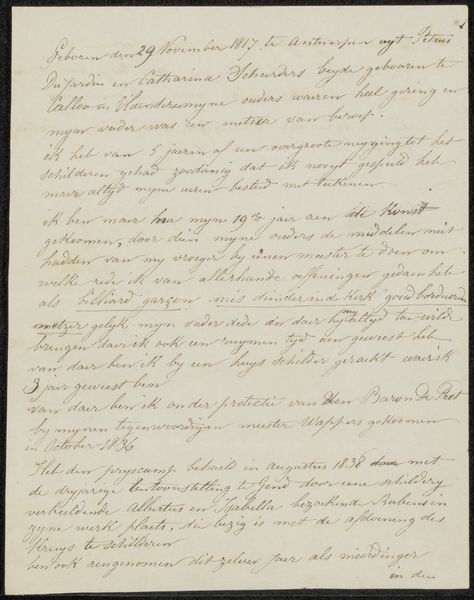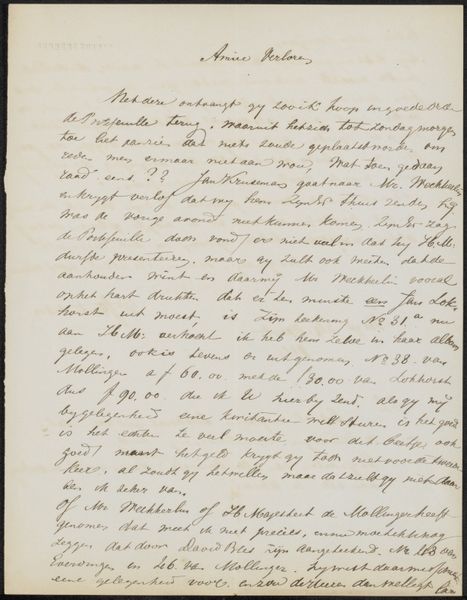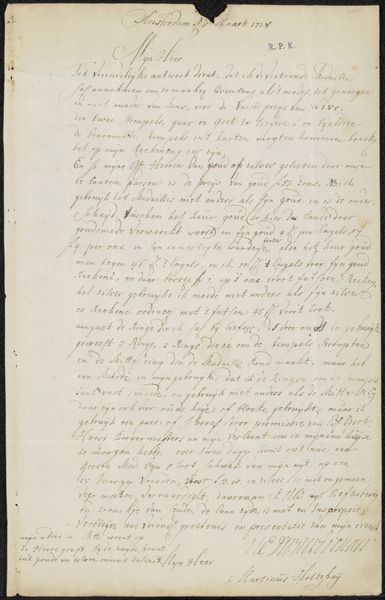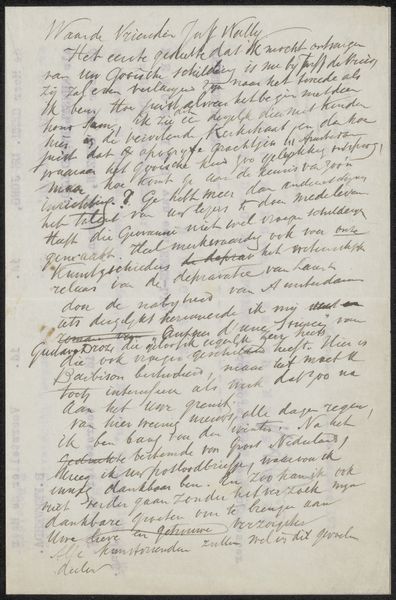
drawing, paper, ink
#
portrait
#
drawing
#
dutch-golden-age
#
paper
#
personal sketchbook
#
ink
#
romanticism
#
calligraphy
Copyright: Rijks Museum: Open Domain
This is a page from the autobiography of Josephus Augustus Knip, written in Dutch sometime in the first half of the 19th century. As an art historian, I'm particularly drawn to the ways institutions shape artistic production and reception. The very act of writing an autobiography speaks to a changing social and cultural landscape. In the 19th century, we see a growing emphasis on the individual and the rise of the artist as a celebrated figure. Knip, a Dutch painter known for his landscapes, is participating in this cultural shift by documenting his own life and career. Consider the act of handwriting itself. Before mass printing and digital media, handwriting was a primary form of communication and record-keeping. The careful script suggests a level of education and social standing. It’s a valuable resource for understanding not only Knip's life but also the social and intellectual milieu in which he operated. By studying such documents, along with exhibition records, and critical reviews, we gain a richer understanding of the artist and his world.
Comments
No comments
Be the first to comment and join the conversation on the ultimate creative platform.

